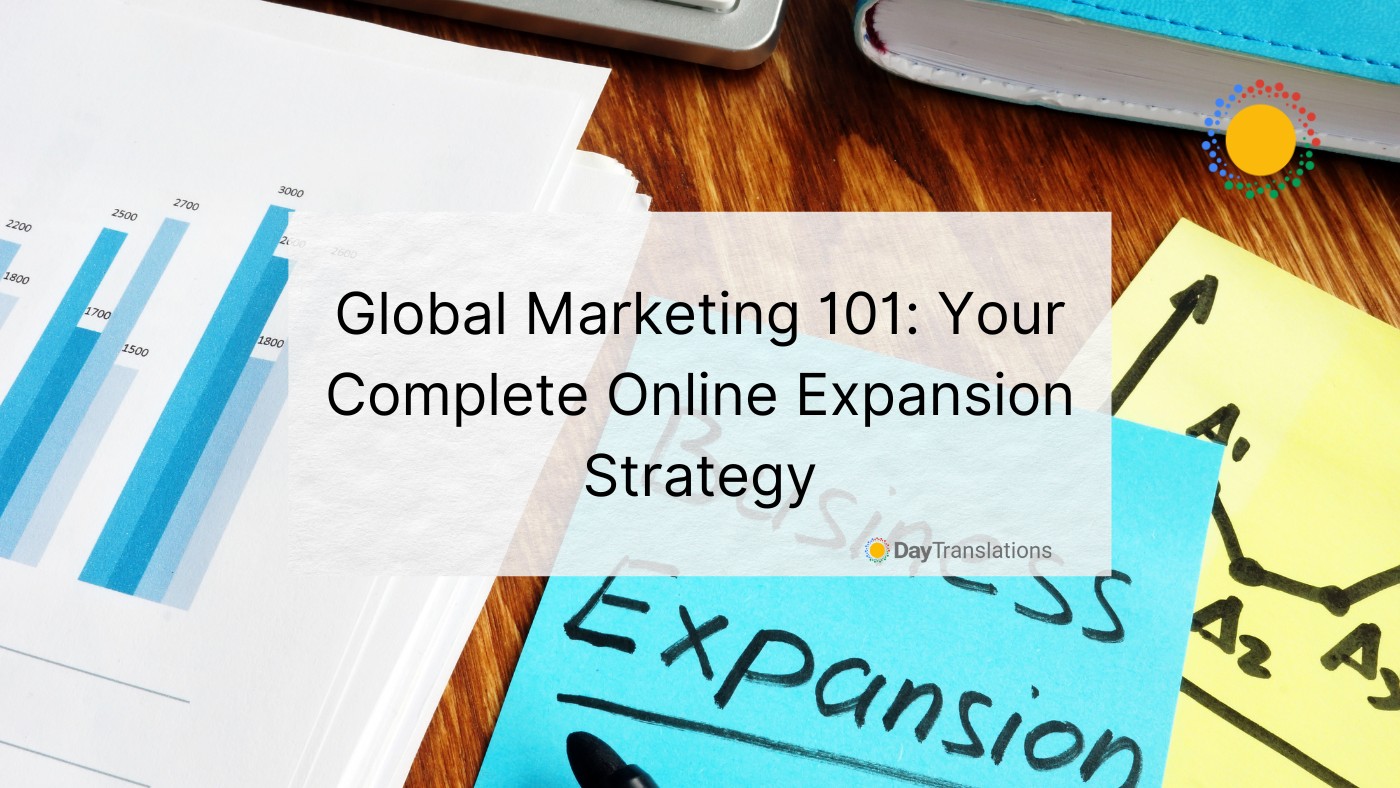International expansion forces us to reimagine most areas of our business. Our marketing is one of them. As our business grows in scale and starts to compete throughout different markets, we can’t just replicate an old winning strategy. What might have worked in our home market might be a recipe for failure in another locale.
Global marketing is far easier, and more cost-effective than it was decades ago. Especially, when we’re referring to global digital marketing.
Digital marketing’s strongest advantages are that it allows us to get real insight into our customers’ behavior, to measure results easily and to conduct highly-customized campaigns at scale. If you’re striving to attract customers in a new locale, having a flawlessly planned, executed and adjusted-by-results digital marketing strategy is key.
Throughout this article, we’ll take a look at some of the main aspects of a multichannel digital marketing campaign.
Since this is a comprehensive guide, we’ve put together a list of in-depth article on each of the topics we’ll be covering. We’ll keep updating this guide for more, so stay tuned!
- Global Social Media Marketing – Your Full Guide, with videos and infographics
- Global PPC Advertising
- Can you translate keywords? – an in-depth look of international keyword research
- Global SEO Guide – How to Rank Across the World
- International Linkbuilding Guide
- Multilingual copywriting
- Global UX Design Guide
- Multilingual Blog Strategy 101– How to target international readers
- Global Email Marketing Guide
- How to Design International Ads – Cross-Cultural Display Design Concepts
- How to Write Calls To Action – for an international userbase
Now, let’s get to our guide for starting your global marketing strategy. There are four basic principles we should have in mind across areas:
- Going global is not about designing strategies “for a global audience”. Internationalizing your content is just a necessary step towards your true end-goal: localization.
- Each new market we want to enter will require cultural research. Just like you have an in-depth notion of your target locale’s market conditions, you should have an in-depth notion of their culture.
- Culture goes beyond language. Flawlessly translating a message without a genuine understanding of how it might come across can result very badly. Extensive knowledge of your target culture, its trends, its customs, its cliches (and how people relate with them), can result, not only in non-offensive campaigns but in brilliant ones.
- Audience segmentation is obligatory. It helps you rank in search engines and fosters a user-centered approach.
Global Social Media Marketing
A localized social media presence generates more engagement than a catch-all “globalized” one. Whether it’s “your regular content”, or a campaign based on user-generated material compiled through a hashtag.
Localization can make your social media content more user-centric, preventing you from excluding foreign customers who might not speak your mother tongue. Localizing and highly-targeting your material also results in more efficient budget allocation.
On the other hand, localization isn’t just about language or culture. We also need to have market trends, regulations, and development-related factors in mind. It’s worth considering that the devices in which the majority of your customers will access social media websites vary by region. In the developing world, internet penetration is driven by smartphone usage. Some regions still have a high percentage of 3G users, some are already using 5G. You should also learn how to create a blog and share some engaging content on your website. Having the technical conditions of your audience in mind, you can create content that will be particularly easy to access for them.
In some instances, customers in a particular region won’t be using the social media platforms you’re accustomed to. For instance, let’s say you want to take an opportunity to expand to one of the most promising markets on earth: China. Chinese users are not on Facebook or Youtube, due to “The Great Firewall”. So, where would you need to be? It would depend on your specific target demographic. WeChat could be a great option, as well as Douyin (抖音), TikTok’s Chinese equivalent.
It’s also possible to automate the monitoring and management of social media marketing campaigns, gauging the impact of promotional efforts without needing to check everything manually. With a modern marketing data insights tool powered by ChatGPT, proving the effectiveness of the steps taken to bolster a brand’s online presence is simple. Marketing recruiters often seek professionals who can harness these tools to optimize campaign performance and adapt strategies to different market needs.
Global Search Engine Marketing
To carry out a successful SEM campaign, we need to set a clear goal and find a way to achieve it. First, we need to decide which pages we should link. Second, we should learn about our competitors: How do they conduct their campaigns? What’s their specific goal? Which keywords are they using? Third, we have to write smart ads that users can’t help but click.
This very simplified and broad model of the planning stages of an SEM campaign has an added layer of complexity when we’re striving to attract a foreign audience. We can’t do without knowledge into our new market, and into the online behavior of our target audience. We need to know what’s going on in our target country, to show them relevant, quality ads. Digital marketing reporting is also essential for the success of any business.
Global Search Engine Optimization
Both the on-page and off-page aspects of SEO are quite challenging when it comes to multilingual websites. For instance, link building with foreign partners requires an in-depth knowledge of the influencers in your niche within that new market. It also requires that you have quality content to offer to them in their own language.
On the other hand, keyword research that you conducted for your home market can’t be merely translated. Aside from perfectly translating your website into your target market’s language, you’ll have to re-do your keyword research and re-optimize your in-page content, to make sure it meets the search queries of users in this new market.
Search Engine Optimization is a complex and continuous process, so it’s best to leave it in the hands of a global marketing services provider who can make it a valuable part of a broader, more comprehensive digital strategy.
International Content Writing
Content marketing is rooted in the principle that our business grows through strong relationships with our customers (and potential customers), and that these relationships are built on providing value. Value goes beyond the mere product. It can also be offered through articles, guides, e-books, tutorials, interviews, and numberless other formats.
To delight our foreign customers with quality content, it has to be in their language. There are several ways to get there: You can either hire foreign language content writers, or you can have your content transcreated by a localization company.
If you’ll start a company blog in a foreign language, make sure that it’s completely separate from your original blog. Mixing up English and foreign language content can harm your search engine rankings.
Resources: Fintech and Localization go together when expanding to international markets. Visit our free guide on Going Global in the Fintech Industry.
Global Email Marketing
According to Marketing Sherpa, 58% of Small Businesses that have an international customer base don’t send localized emails. Instead, they conduct have one-fits-all international campaigns. This is a mistake.
Aside from the linguistic and cross-cultural aspects we’ve already covered, there are two main factors you should focus on: When it comes to email, timing and targeting are everything. Segment your audience properly, and be quick to learn at what times they’re the most likely to open or click on your emails. Adjust accordingly and don’t be afraid to experiment.
Conclusions
Doing business on a global scale is never easy. But it has enormous potential. Luckily, global marketing isn’t as hard or costly as it used to be. You might be tempted to cut costs or dismiss certain small things as irrelevant. But every last detail adds up to a customer’s experience of your brand.
One of the greatest advantages of digital has to do with how easy it makes it to garner insight into our audience, measure our campaigns’ results and improve them accordingly. A constant exchange between your brand and your audience should help you fine-tune every aspect of your business, including your marketing. Place your customer at the center of your company, regardless of where they’re from, and proceed accordingly.
Aside from the basic linguistic assistance you need to make yourself understood, reach out to cross-cultural partners. The right partnerships can guarantee your brand’s online presence is optimized (both for search engines and for mobile users), culturally relevant, legally compliant, congruent with its mission and loyal to its customers, across locales.


















Sorry, the comment form is closed at this time.